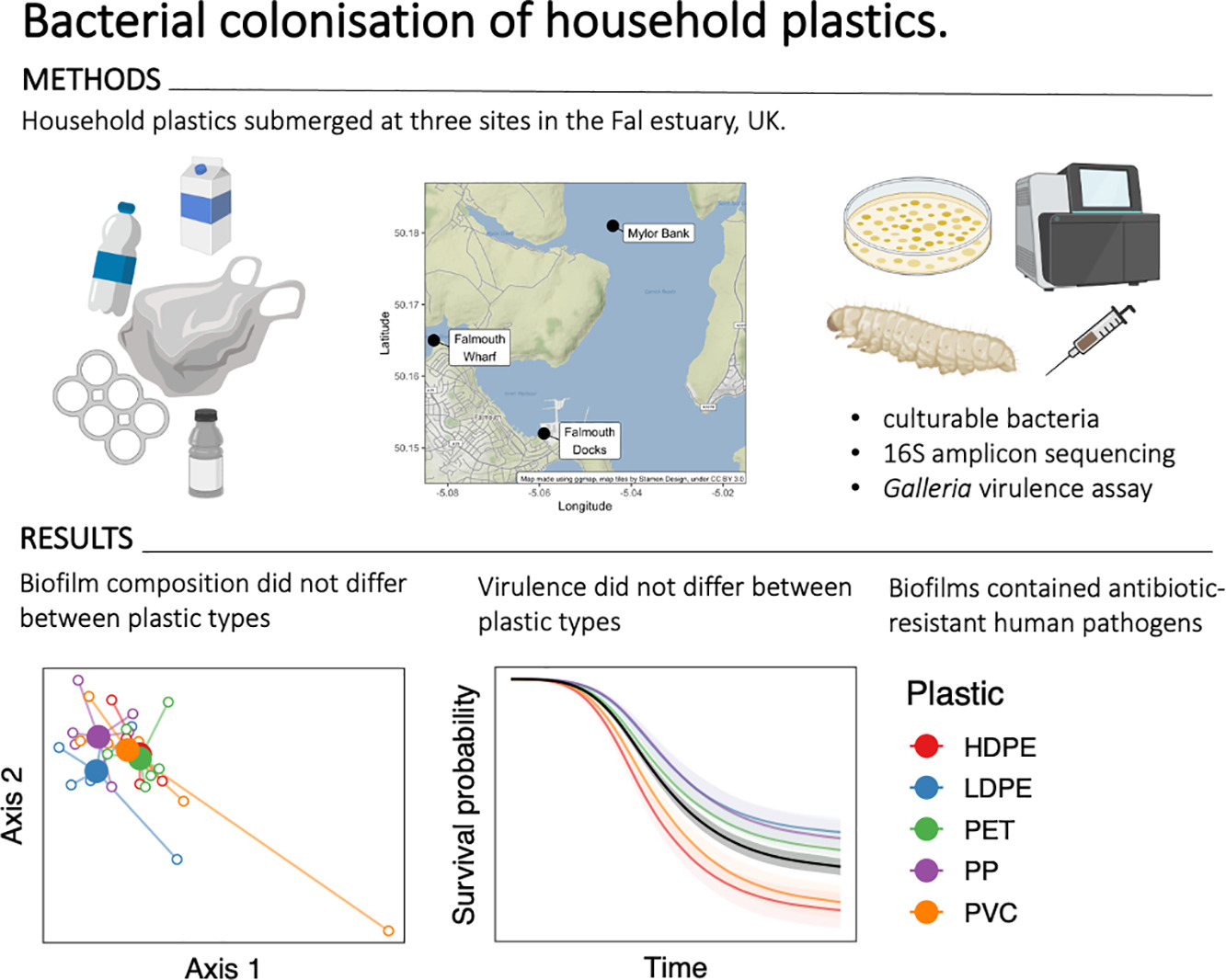Bacterial colonisation dynamics of household plastics in a coastal environment
Citation
Lear, L., Padfield, D., Dowsett, T., Jones, M., Kay, S., Hayward, A., & Vos, M. (2022). Bacterial colonisation dynamics of household plastics in a coastal environment. Science of the Total Environment, 838, 156199.
Abstract
Accumulation of plastics in the marine environment has widespread detrimental consequences for ecosystems and wildlife. Marine plastics are rapidly colonised by a wide diversity of bacteria, including human pathogens, posing potential risks to health. Here, we investigate the effect of polymer type, residence time and estuarine location on bacterial colonisation of common household plastics, including pathogenic bacteria. We submerged five main household plastic types: low-density PE (LDPE), high-density PE (HDPE), polypropylene (PP), polyvinyl chloride (PVC) and polyethylene terephthalate (PET) at an estuarine site in Cornwall (U.K.) and tracked bacterial colonisation dynamics. Using both culture-dependent and culture-independent approaches, we found that bacteria rapidly colonised plastics irrespective of polymer type, reaching culturable densities of up to 1000 cells cm3 after 7 weeks. Community composition of the biofilms changed over time, but not among polymer types. The presence of pathogenic bacteria, quantified using the insect model Galleria mellonella, increased dramatically over a five-week period, with Galleria mortality increasing from 4% in week one to 65% in week five. No consistent differences in virulence were observed between polymer types. Pathogens isolated from plastic biofilms using Galleria enrichment included Serratia and Enterococcus species and they harboured a wide range of antimicrobial resistance genes. Our findings show that plastics in coastal waters are rapidly colonised by a wide diversity of bacteria independent of polymer type. Further, our results show that marine plastic biofilms become increasingly associated with virulent bacteria over time.
Graphical Abstract
